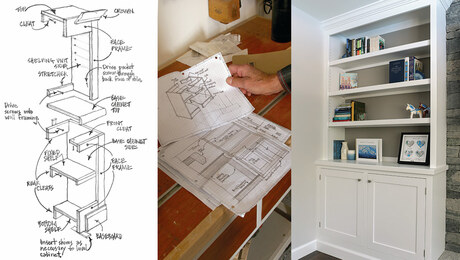*
good point. I back prime all wood…interior and exterior.
my experience is that wood floors have a vapor barrier installed under them..though it would be difficult to make the case that the vapor barrier is as effective as a back prime.
*
good point. I back prime all wood…interior and exterior.
my experience is that wood floors have a vapor barrier installed under them..though it would be difficult to make the case that the vapor barrier is as effective as a back prime.

A standardized approach, quick-to-install hardware, and a simplified design make building custom casework cost-effective.

"I have learned so much thanks to the searchable articles on the FHB website. I can confidently say that I expect to be a life-long subscriber." - M.K.
Get home building tips, offers, and expert advice in your inbox
Fine Homebuilding
Get home building tips, offers, and expert advice in your inbox
© 2024 Active Interest Media. All rights reserved.
Fine Homebuilding receives a commission for items purchased through links on this site, including Amazon Associates and other affiliate advertising programs.
Get home building tips, offers, and expert advice in your inbox
Become a member and get instant access to thousands of videos, how-tos, tool reviews, and design features.
Start Your Free TrialGet complete site access to expert advice, how-to videos, Code Check, and more, plus the print magazine.
Already a member? Log in
Replies
*
good point. I back prime all wood...interior and exterior.
my experience is that wood floors have a vapor barrier installed under them..though it would be difficult to make the case that the vapor barrier is as effective as a back prime.
*
why isn't wood strip flooring back primed before install, to seal out moisture & reduce the amount of seasonal expansion / contraction ???
*Wood strip flooring is typically very stable and kiln dried. It is typically used in interior installations where it is not exposed to the ravages of weather. Seasonal expansion and contraction is normal and back sealing would do very little to eliminate this. Even siding that is back primed suffers from seasional movement, it is just not apparent since the tolerances are much greater than flooring.
*
wood flooring is at a level in the house that moisture should not be anyway, think of it as carpet, do you prime the carpet or make it water resistant in any way? Expansion and contraction will come into play anyplace in the structure, its natural and will happen...hopefully at the same rate as the subfloor, and will not matter. But if moisture is the main concerne here, a remedy below the subfloor is what needs to be found.